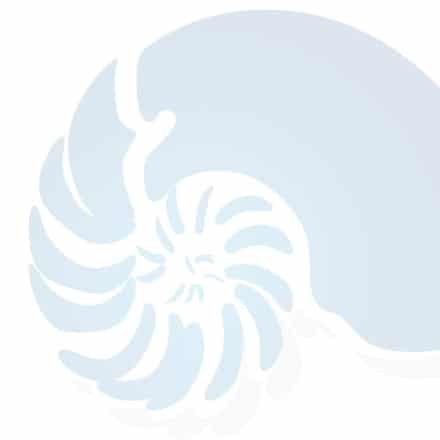What Is a Balance Disorder?
A balance disorder is a condition marked by the symptoms of feeling unsteady or dizzy. Even while standing, lying or sitting still, a person with a balance disorder will feel as if they are moving, spinning or floating. While walking, people may feel as if they are tipping over.
Primary symptoms include:
- Dizziness or a spinning sensation (vertigo)
- Falling or feeling as if you are going to fall
- Lightheadedness
- Faintness
- Floating sensation
- Blurred vision
- Confusion or disorientation
- Nausea and vomiting
- Changes in heart rate and blood pressure
- Fear and anxiety or panic attacks
These disorders can be caused by anything that affects the inner ear or the brain such as medications, ear infections or head injuries. The risk for balance disorders increases as people get older.


What Are the Most Common Balance Disorders?
Benign Paroxysmal Positional Vertigo (BPPV)
BPPV is the most common cause of vertigo. The episodes of vertigo may be severe, but usually lasts for less than a minute. These brief but intense periods of vertigo that are triggered by specific changes in head position. It occurs when tiny crystals in the otolith organs become dislodged and migrate to the semicircular canals.
Other symptoms include dizziness or lightheadedness, loss of balance, blurred vision, nausea, vomiting and concentration difficulties.
Meniere’s Disease
This chronic condition causes vertigo, tinnitus, fullness in the ear and fluctuating hearing loss that may eventually become permanent. Meniere’s is usually confined to one ear and though its cause is unknown it may be the result of abnormal fluid buildup in the inner ear.
The exact cause of Ménière’s disease is unknown. It is believed to be associated with a dysfunction of the endolymphatic sac, an organ responsible for regulating the volume and pressure of fluid in the inner ear. Various theories point to circulation disorders, viral infections, head trauma, allergies, migraines and obstructions of the ear canal as possible causes.
It is estimated that Ménière’s disease affects about one out of every 1,000 people, with most patients between the ages of 40 and 60.
Labyrinthitis
Labyrinthitis is an inflammation of the inner ear usually caused by an infection. Its symptoms include vertigo, temporary hearing loss and tinnitus.
How Are Balance Disorders Diagnosed?
Since many balance disorders have similar symptoms, an accurate diagnosis is crucial for your audiologist to come up with a successful treatment plan. There are a number of diagnostic tests available. The most common include:
- Acoustic Immittance Measures. These tests evaluate the eardrum and middle ear and are used to determine which part of the ear is affected by hearing loss.
- Auditory Brainstem Response (ABR). This neurologic test provides information about the electrical activity in the auditory pathway between the inner ear and the brain and measures a person’s hearing sensitivity.
- Electrocochleography. This test is used to determine whether there is excess fluid in the inner ear by measuring the electrical currents generated by sound stimulation and can help with the diagnosis of Meniere’s disease and other balance and hearing disorders.
- Electronystagmography (ENG). This test measures eye movements in order to assess the functioning of the vestibular system, responsible for balance. ENG tests usually consist of four parts: evaluation of rapid eye movements, tracking tests to measure eye movements as they follow a visual target, positional test for measuring dizziness in response to different head positions and a caloric test that measures responses to warm and cold water circulating through a tube in the ear canal.
- Videonystagmography. This test measures eye movements to evaluate the inner ear and central motor functions. It can determine whether a vestibular disorder is the cause of a balance problem, and where one or both ears are affected. This is similar to ENG testing, but an infrared video camera attached to a pair of goggles is used in place of electrodes. The same four-part testing process is utilized.
- Posturography. This balance test measures the effectiveness of the somatosensory system, vestibular system, and vision to determine which area(s) to focus on when treating a balance disorder.
- Rotary Chair Tests. The rotary chair test measures eye movements in response to corresponding head movements; it is used to determine whether symptoms are related to an inner ear disorder or a brain disorder. Like the ENG and VNG tests, either electrodes or a goggle-mounted video camera is used to record eye movements. You are seated in a computerized chair that moves. This test provides more detailed information about the function of the balance system than an ENG or VNG test.
- Computerized Dynamic Posturography (CDP). CDP tests measure how well the visual, vestibular and sensory systems work together to maintain balance. With this test, you stand on a platform and follow a visual target while platform movements record the degree to which your body sways. It includes an Adaptation Test in which the platform moves up and down and a Motor Control Test where the platform moves forward and backward. These are used to measure reflexive responses to unexpected movement. CDP is frequently used those undergoing vestibular rehabilitation.
- Vestibular Evoked Myogenic Potential (VEMP). VEMP testing is used to determine whether the saccule (an inner ear organ) and vestibular nerves are functioning properly. Electrodes are attached to the neck and sounds are transmitted through a pair of headphones. The electrical response of the sternocleidomastoid muscle in the neck is recorded.

How Are Balance Disorders Treated?
Treatment for balance issues take many forms, depending on the cause. Your doctor will try to target the underlying condition in order to reduce or eliminate the symptoms. Treatment options include:
- Medications (antihistamines, sedatives, antibiotics or steroids)
- Physical or occupational therapy
- Surgery
- Repositioning exercises
- Vestibular retraining programs
- Lifestyle modifications (such as dietary changes and elimination of alcohol and nicotine)
Contact Us
If you are experiencing a medical emergency, please call 911.
To request an appointment or connect with our team, please complete the form below.

